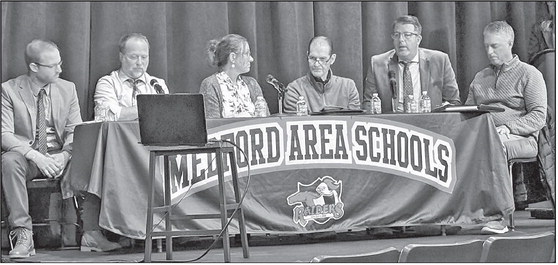More scrutiny of TIF districts urged
By Kevin O’Brien
Marathon County officials should be asking more questions about tax-incremental financing districts (TIDs) and should even consider trying to get state lawmakers to rein in districts that exempt millions of dollars in property value from traditional taxation for decades.
That was the message delivered last week by former supervisor Dave Oberbeck, chair of the county’s TIF task force, which started meeting last September to discuss how TIDs are affecting county revenues and whether they are generating economic development.
TIF districts are designated areas within cities and villages where the property taxes on any new buildings are used to pay off loans for infrastructure improvements and developer incentives in the district, instead of being distributed to the county, school district and technical colleges like normal. During discussions last year, it was estimated that over $1 billion in property value is essentially off-limits to traditional taxation across the 40 active TIF districts in the county.
During his presentation to the Human Resources, Finance and Personnel Committee on Aug. 20, Oberbeck said one of the most important questions county officials need to ask before a new TID is created is: Would the proposed development still happen without tax-incremental financing?
See TIDS/ Page 6 TIDs
Continued from page 1
Oberbeck said it’s often difficult to determine with any certainty whether a TID is truly necessary to spur development in a certain area. Municipal officials, however, often say that TIDs are one of the only ways to draw in developers to build new businesses and housing.
As one of the taxing jurisdictions that is asked to forgo thousands of dollars in annual property taxes for 20 to 30 years, the county is allowed to have a representative on what is called the Joint Review Board (JRB). These groups, which are composed of representatives from the county, school district, technical college and municipality, have the authority to create a new TID expand or contract its boundaries and establish how long it will stay open.
In the past, former finance director Kristi Palmer was the county’s representative on all JRBs across Marathon County, but she recently retired and her replacement, Sam Fenske, has only been on the job for a few months.
Oberbeck said it’s very important that the county’s representative on the JRBs is wellprepared to ask the right questions and look out of the county’s financial interests when voting on whether to create, expand or extend a TID’s lifespan.
As part of their discussions, Oberbeck said task force members found that the finance director could benefit from more time to review new TID proposals.
One of their suggestions was to require at least 30 days of advance notice so the county can gather feedback from citizens, developers and others involved. Another is to change the composition of the JRBs to include more citizen members and perhaps elected officials from the county and school districts. These changes would have to be made at the state level.
Another area of concern is how long TIDs are allowed to remain open, especially since state law allows municipalities to petition for multiple time extensions. Oberbeck said “a child can be born, go through high school and college and start a family” before the tax dollars in a TID become available to pay for services such as police, firefighting and education.
“Most people would say it’s too long,” he said.
Also, under state law, TIF districts cannot contain more than 12 percent of a municipality’s total property value during the year in which a new one is created. However, once property values start to increase within TIF districts, more of the tax burden shifts to those outside the district to pay for public services.
Oberbeck said this issue could be addressed by contracting the boundaries of TIDs, instead of just expanding them, which would allow more property value to be taxed by the county, school district and technical colleges. He noted that the city of Wausau reduced the size of one of its TIDs by half.
Another idea for managing TID growth is for JRBs to set shorter lifespans for some districts, ensuring that they close once all of the development expenses have been met instead of just continuing to accumulate revenue, Oberbeck said.
Other ideas from the task force include annual reports to the county board on TID performance within the county’s municipalities, along with establishing best practices and developing standard questions to ask whenever a new district is proposed or slated for an expansion.
Oberbeck said the task force’s goal is not to eliminate TIDs but to improve them so the county can ensure it is getting a return on investment in the form of new jobs, visitor destinations and, ultimately, more tax revenue.
Under its founding charter, the task force was supposed to provide a report and formal recommendations to the county board by April 1 of this year, but that did not happen.
Supervisor John Robinson said the next step will be to take Oberbeck’s suggestions and delegate them to various committees, including Education, Extension and Economic Development (EEDC) and Executive, for further discussion.
Board chairman Kurt Gibbs agreed with Robinson, saying the ultimate goal should be for the county board to establish criteria for how to evaluate TIF districts to ensure the county is getting a return on investment for the tax dollars it is giving up.



